 As high street shops start to face more pressure from online outfits and changing consumer habits, the decision to turn some tube stations into small shopping centres might not go down well with shopkeepers.
As high street shops start to face more pressure from online outfits and changing consumer habits, the decision to turn some tube stations into small shopping centres might not go down well with shopkeepers.
Author: Eva Glass
Microsoft starts selling Surface tablets in bulk
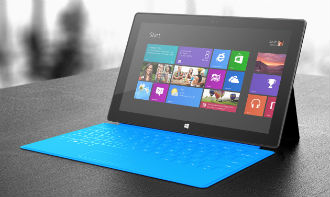 Microsoft’s Surface tablets are off to a rather unimpressive start, but Redmond now believes that it can woo more business users by selling its gear in bulk. The new service allows business users to place volume orders for Surface tablets, reports ZDNet. We are, however, not convinced it will help Microsoft’s cause.
Microsoft’s Surface tablets are off to a rather unimpressive start, but Redmond now believes that it can woo more business users by selling its gear in bulk. The new service allows business users to place volume orders for Surface tablets, reports ZDNet. We are, however, not convinced it will help Microsoft’s cause.
The Surface Commercial Order service is only available to authorized partners and volume licensees, which means smaller outfits can’t take advantage of it. The real question is whether anyone will take up Microsoft’s offer. Microsoft is still not saying much, but it seems the bulk rollout will be very limited indeed.
Surface sales are another thing Microsoft is willing to talk about. Analysts reckon that it manage to shift upwards of one million Surface RT tablets, along with 400,000 units of the pricier Surface Pro. The figures are unimpressive to say the least.
Microsoft still believes that Surface tablets, and especially the x86 based Pro version with Windows 8, are the right choice for businesses. The decision to make it a bit easier for partners and volume licensees to order heaps of Surfaces seems like a logical move in that direction, but Microsoft might have missed the boat already.
Apple’s iPad still reigns supreme in the business space, and it is being challenged by Android tablets, not Microsoft gear. BYOD is another worrying trend that should be taken into account. Few people will buy Surface RT tablets for personal use and even fewer will go for the chunky and expensive Pro version. They will try to use their iPads and Android slates at work and most companies will be happy to let them do so.
SMBs don’t care about Windows 8
 Small and medium sized businesses don’t tend to be tech trendsetters, but there is one trend they are not missing out on. They hate Windows 8.
Small and medium sized businesses don’t tend to be tech trendsetters, but there is one trend they are not missing out on. They hate Windows 8.
A recent survey conducted by software vendor Sage North America has revealed that Windows 8 is getting a lukewarm reception from most SMBs. Just 20 percent are using Windows 8 machines at the moment, or plan to upgrade over the next six months.
Small businesses spend peanuts on web ads
 Small businesses don’t appear to be too interested in cheap web ads offered by Google, Yahoo, Facebook and other outfits. Although the ads are very cheap indeed, small businesses in the US are simply not going for them.
Small businesses don’t appear to be too interested in cheap web ads offered by Google, Yahoo, Facebook and other outfits. Although the ads are very cheap indeed, small businesses in the US are simply not going for them.
The Boston Consulting Group recently worked out that small businesses spend a mere 3 percent of their tiny ad budgets online.
BCG’s survey covered 550 outfits and found that only Groupon and similar daily deal companies are bucking the trend.
In contrast, bigger outfits spend up to 15 percent of their ad budgets online, hence they dominate the online ad space. Small businesses are simply not keeping up and they prefer to spend their ad money on traditional marketing vehicles, like coupons and Sunday circulars.
“Most small businesses operate the old-fashioned way, with little recognition of the internet as a channel or a source of leads,” said Sebastian DiGrande, senior BCG partner and co-author of the article. “Many small-business owners are not even aware that they have an online profile that they could be actively managing on many popular sites.”
DiGrande also pointed out that few small business owners were even aware of the perks of online advertising, such as low prices and free availability of certain services. Other co-authors said they were surprised by the lack of interest, especially in light of the social media boom, which gave everyone a voice on the cheap. The report found that small businesses continue to prefer very traditional ad channels, which might put them at a disadvantage in the long run.
The authors also found that providers or local advertising and marketing services need to learn a few lessons if they want to attract more small businesses. They need to tailor their offers and pricing to better suit their needs and they have to show small business owners some tangible benefits of online advertising.
”Companies that can redirect the billions of dollars of small-business-advertising spending toward digital marketing will unlock enormous value,” the report concludes. “The opportunity benefits everyone: successful campaigns will simultaneously fuel the growth of small businesses and media and marketing companies – if both players can learn to leverage local advertising.”
European Commission cracks down on e-commerce scams
 The European Commission is planning to crack down on aggressive e-commerce practices which are apparently discouraging consumers from shopping across union borders online.
The European Commission is planning to crack down on aggressive e-commerce practices which are apparently discouraging consumers from shopping across union borders online.
The commission has announced plans to promote coordinated enforcement efforts and help member states share best practices in light of a review of the Unfair Commercial Practices Directive.
The directive introduced standardised rules across the EU five years ago, including bans on unfair business-to-consumer commercial practices, bans on misleading consumers, fake free offers, consumer baiting, hidden advertising and direct marketing to children. However, the European Commission found that consumers and businesses are still uncertain about how the new rules need to be applied by national authorities., reports Out-Law.com.
“Consumer spending accounts for 56% of EU GDP, but a lack of consumer confidence in shopping across EU borders means we are still not tapping into the full potential of the Single Market,” said EU Justice Commissioner Vivienne Reding. “We have good rules in place to protect consumers, but we need to make sure they are better enforced, especially in cross-border cases.”
Reding stressed that rogue traders should not be tolerated and that consumers have to know exactly what they are buying. Consumers must be sure they are not getting ripped off in the process, especially when they are spending across the border. The EC found that only 40 percent of EU consumers shop across EU borders online. British retailers are leading the cross-border e-commerce charge, so this should be good news for them, provided the EC doesn’t botch it.
The commission said that consumers are a lot more interested in making cross-border purchases now than they were in 2006, before the Directive came into force. However, plenty of other factors contributed to growth and the Directive was just a small piece of the puzzle.
Apple selling refurbished iPads in online store
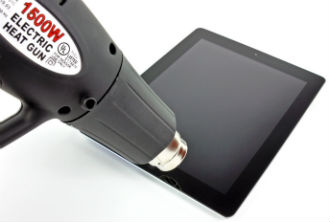 Consumers want cheaper tablets and even Apple has given in to the trend, with the introduction of the iPad mini last year. Now it is going a step further, by selling refurbished iPads online.
Consumers want cheaper tablets and even Apple has given in to the trend, with the introduction of the iPad mini last year. Now it is going a step further, by selling refurbished iPads online.
Appleinsider reports that Apple is already listing a number of refurbs in the US. For example, a black 32GB iPad mini with Wi-Fi and cellular is up for grabs for $429, while a Wi-Fi only 32GB white unit goes for $389. Fourth generation 9.7-inchers are also there. A Wi-Fi only 16GB Retina pad will set you back $449, while a black one with Verizon cellular is priced at $579.
Although they are refurbished, they are hardly bargains. Going for a refurbished iPad mini should save consumers $30 to $40 depending on the SKU, or $50 on Retina 9.7-inch models. They are still a lot pricier than brand new Android tablets, but there is a very good reason for that.
Apple still enjoys a comfortable lead in the tablet space, courtesy of its app ecosystem, which is second to none. Demand for Android tablets is going up, but consumers are going after cheaper models, not high-end gear with HD screens.
Ultra HD TV panel shipments to hit 2.6 million units this year
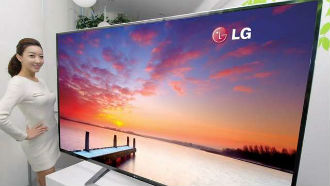 The first Ultra HD devices are hitting the market and analysts now estimate 2.6 million Ultra HD TV panels could be shipped by the end of the year.
The first Ultra HD devices are hitting the market and analysts now estimate 2.6 million Ultra HD TV panels could be shipped by the end of the year.
Since Ultra HD, or 4Kx2K is a relatively new standard, shipments last year were negligible, just 63,000 units. This year we should see the first generation of commercially viable Ultra HD televisions, but it will take years before they go mainstream.
Ultra HD sets are extremely expensive and they are pretty pointless for the time being. There is practically no 4K content out there and spending thousands on “future proof” TVs just isn’t an option for most consumers. NPD Display Search reckons panel makers are looking to speed up 4Kx2K adoption by strengthening their relationships with TV brands and stepping up their manufacturing and sales efforts.
DisplaySearch Vice President, Greater China Market, said Innolux Corp is the most aggressive Ultra HD panel maker at this point, as it is developing a full line-up of panels in the 35- to 85-inch range.
“Despite this, 4K×2K panel manufacturers’ shipments are primarily focused on 50″, 55″/58”, and 65″ sizes, which are expected to have the highest volume shipments, especially in China,” said Hsieh. “4K×2K LCD TV is the newest TV technology available, and in order for it to be successful, it will be critical for the supply chain to avoid falling behind when making their purchases, even if content is still scarce. Some panel makers are also working with design houses to develop circuits built into the panel, to enable up-scaling of HD to 4K×2K content. This will help to drive the 4K×2K LCD TV market and encourage panel makers, especially those that have already started design-in work with TV brands in 2013.”
It all sounds a tad optimistic. New chips and upscaling are no substitute for 4K content, which is simply not around and it won’t be readily available for years to come.
Target gobbles up two e-commerce culinary chains
 Discount retail chain Target is expanding its e-commerce operation with a couple of tender and juicy acquisitions.
Discount retail chain Target is expanding its e-commerce operation with a couple of tender and juicy acquisitions.
Reuters reports that the company has agreed to buy Chefs Catalog and Cooking.com.
The acquisitions should boost Target’s ability to sell cooking products and kitchenware online and fancy ceramic knives will only be a click away.
Target did not disclose the financial terms, but both deals should be closed in 30 days and they will not affect the chain’s financial results.
Chefs Catalog sells kitchen utensils and tools directly to customers through its website, while Cooking.com sells more than 30,000 various products, including recipes and other member-submitted cooking content.
Thanks to Jamie Oliver and other celebrity chefs, an increasing number of people are turning to home cooking as a healthier and cheaper alternative to eating out. The fact that quite a few people are broke and can’t afford to dine out also helps.
Surface tablet sales fall short, resemble Zune
 Oh dear. It looks like the sceptics were right, Microsoft’s Surface tablets are lemons. Bloomberg is reporting that Microsoft has sold about 400,000 Surface Pro tablets since their debut last month. In addition, it only managed to sell a little over a million Surface RT tablets.
Oh dear. It looks like the sceptics were right, Microsoft’s Surface tablets are lemons. Bloomberg is reporting that Microsoft has sold about 400,000 Surface Pro tablets since their debut last month. In addition, it only managed to sell a little over a million Surface RT tablets.
Microsoft reportedly ordered three million Surface RT tablets last year, but sales never picked up and Redmond was forced to scale back the order.
The lacklustre figures come as no surprise. Earlier this year it emerged that the RT faced high return rates and very low sell-through, with shipments totalling just 900,000 units in the first quarter of sales. The Surface Pro did not fare any better. It got relatively negative reviews and since it is quite a bit pricier than the RT, consumers don’t seem keen to make the leap of faith.
JMP Securities analyst Alex Gauna told Bloomberg that Microsoft has failed to prove that Windows has a place in a new world dominated by touchscreens.
“It’s pretty clear that things were bad entering the year, and at least for the moment they’re getting worse,” he said. “The path to a successful Surface, in the same way that they were successful with Xbox, is not very clear to me right now.”
Apple still commands a 50+ share of the tablet market, although it is projected to slip under 50 percent later this year. Analysts put Apple’s iPad shipments in Q4 at 22.9 million units, which dwarfs every single competitor. However, Apple is losing share to Android, not Windows.
IDC reckons that the share of Windows RT tablets will stay below 3 percent through 2017, while Windows 8 could end up on 7.4 percent of tablets, in 2017 of course. In other words, Windows tablets are going nowhere, fast.
HTC guerrilla marketing campaign takes on Samsung juggernaut
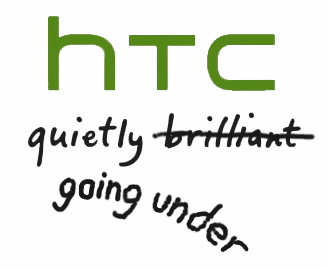 Troubled smartphone maker HTC is not giving in yet. It used the Samsung Galaxy S4 launch event to stage a guerrilla marketing event of its own. HTC can’t take on Samsung in a set piece battle or in a war of attrition, but it seems eager to fight on the landing grounds, in the fields and in the streets. The streets of New York that is.
Troubled smartphone maker HTC is not giving in yet. It used the Samsung Galaxy S4 launch event to stage a guerrilla marketing event of its own. HTC can’t take on Samsung in a set piece battle or in a war of attrition, but it seems eager to fight on the landing grounds, in the fields and in the streets. The streets of New York that is.
HTC did not use Spitfires and Hurricanes, it resorted to an even more potent marketing weapon – lovely ladies handing out HTC One samples. Sometimes a friendly smile works better than a Vickers machine gun. HTC let the crowd try out its new flagship phone at the sidelines of Samsung’s Unpacked 2013 event and it offered a $100 rebate for anyone who trades in their old phone, reports Business Insider.
Samsung held two separate events in New York, one for the media and one for consumers. Apparently HTC chose to target the latter. It is unclear how many consumers fell for it, but in our opinion the HTC One has what it takes to slug it out with Samsung’s Galaxy S4. Sadly though, HTC lacks hundreds of millions of dollars to take on Samsung’s hype machine and hype is proving more important than actual products.
HTC is down, but it is not out. And if the HTC One fails we will sink into the abyss of a new dark age made more sinister, and perhaps more protracted, by the lights of perverted Samsung science.
HTC is not the only Android outfit that chose not to yield to the apparently overwhelming might of the enemy. LG took out a few cleverly placed ads, trolling Samsung’s SIV ads in New York as well.
Big Blue launches Customer Experience Lab
 IBM has launched an initiative aimed at helping its staff improve their interaction with customers and other staff. The IBM Customer Experience Lab is supposed to help both IBM and other businesses by allowing them to gather more feedback from social networks, the target audience and the workforce.
IBM has launched an initiative aimed at helping its staff improve their interaction with customers and other staff. The IBM Customer Experience Lab is supposed to help both IBM and other businesses by allowing them to gather more feedback from social networks, the target audience and the workforce.
Mahmoud Naghshineh, IBM vice president of services research, believes emerging technologies, including social media and mobile tech, are changing the way organisations get feedback from their customers. With that in mind, there is a need to tap them as soon as possible.
“Today, businesses have a completely different way of engaging customers,” he said. “There are all these new ways of reaching out to people [but] you need to know when the right time is to engage.”
The new lab will allow clients to access IBM researchers and consultants, who will then deliver systems that learn and personalize the experiences of each individual customer, identify patterns, preferences and create context from Big Data, and drive scale economics. The whole idea is similar to IBM’s Services Lab, launched a couple of years ago.
IBM says the new customer oriented lab will focus its efforts on helping customers obtain more insight into their user base. IBM will use machine learning and visual analytics to predict differences in individual customers, thereby customizing services to a much greater extent.
The lab will be staffed by more than a hundred IBM researchers from across the world and it will also offer clients a number of workshops for generating new ideas. Although the lab will be headquartered in New York, it will feature researchers from twelve IBM labs around the globe, from Africa, Brazil, Israel, India and Japan, to the United States.
Google Shopping ads now extend to mobiles
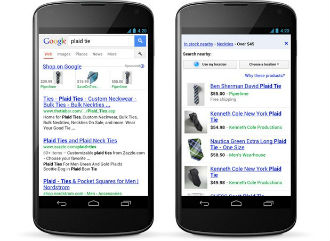 Google is bringing Google Shopping product listings to mobile devices. Google has been serving up product listings on desktop search results for quite a while, but now it is taking them to cramped mobile screens as well.
Google is bringing Google Shopping product listings to mobile devices. Google has been serving up product listings on desktop search results for quite a while, but now it is taking them to cramped mobile screens as well.
A simple Google search on a phone or tablet will now result in several listings popping up above the organic search results.
This ad unit is labeled as ‘Sponsored’ and displays rich product images, prices, retailers and more. It might be a boon for some users and m-commerce outfits, but sticking an ad unit in mobile searches is bound to irk quite a few consumers, especially those who didn’t fall for the oversized smartphone craze.
Google explained the finer points of its approach in an Adwords Blog entry and it was quick to point out that the new service will allow potential consumers to narrow down their searches and save money in the process. It should boost Google’s mobile ad revenue and it also opens up a range of new possibilities.
The listings are location-aware, which means they could come in handy on the road, or abroad. Comparing prices, exchanging money or just getting a quick bite to eat in a new city should be easier than ever, especially if Google Now goes mainstream and lends a helping hand.
However, when you’re not on the road and when you just want to search for something, the ads will do what all ads do best – annoy you.
Brits lag behind US in mobile commerce
 Although British retailers seem to have an upper hand in European mobile commerce, a new report indicates that they are lagging behind their American counterparts in m-commerce.
Although British retailers seem to have an upper hand in European mobile commerce, a new report indicates that they are lagging behind their American counterparts in m-commerce.
The study was carried out by multi-touch retail technology provided Skava, and it found that only half of Britain’s top 100 retailers have optimized their websites for mobile devices. In contrast, all of the top US retailers have already done so.
The study found that revenue from mobile accounts for about one percent of all online sales in Europe. However, it is growing at a compound rate of 43.1 percent. Forrester estimated mobile revenue will account for 6.8 percent of European online revenue by 2017. That amounts to 19 billion euro.
Forrester analyst Martin Gill stressed that UK retailers have to adopt mobile tech if they hope to move forward. However, he also believes they will face plenty of challenges.
“A number of factors encourage and inhibit the adoption of mobile commerce… consumer trust, the convenience and value proposition of mobile shopping, the ease of payment and the availability of products at the right price,” said Gill. “European eBusiness executives in many countries have been slow to provide mobile-optimized experiences and these factors — both supply and demand — will continue to limit the opportunities.”
The study found that smartphone and tablet users tend to interact with their devices quite a bit differently than PC users. Hence, retailers’ websites must be optimized to cater to new platforms. They also need to respond quickly to new market trends and devices, which is easier said than done due to the mind boggling pace of progress in the mobile industry.
UK backs retail sector’s luxury expansion abroad
 As many as 1,000 posh retail outfits will get assistance from the government to foster further international growth over the next two years.
As many as 1,000 posh retail outfits will get assistance from the government to foster further international growth over the next two years.
The UK Retail Industry International Action Plan was developed by the UK Trade & Investment (UKTI) and the retail industry. The goal is rather straightforward, taxpayer money will be used to help the retail sector expand into expanding overseas markets.
Business Secretary Vince Cable believes retail has a big role to play in British exports, as the government tries to rebalance the economy.
“With this action plan UKTI will back small and large retailers across the UK to grow and expand into new export markets,” he said in a statement. “The UK’s dominance in e-commerce puts retailers in a world-beating position to capitalise on the fast growing demand for British goods and luxury brands.”
The plan is focused on luxury retailers, who aim to expand into bustling cities such as Beijing, Moscow, Mumbai, Istanbul, Shanghai, St Petersburg and other cities with plenty of nouveau riche in white Bentleys.
According to International Business Times, the global retail sector is set to grow by 8 percent through 2016, which is not the case with most European markets, including Britain.
However, it should be noted that British retailers are doing rather well abroad, even without government handouts.
Acer triples tablet shipment target for 2013
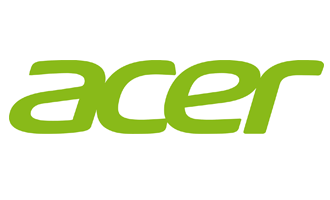 Although Acer is still one of the world’s leading PC makers, it hasn’t had much luck in the tablet market. The same goes for most PC makers, but things could be about to change. Acer has tripled its tablet shipment target for 2013 and unsurprisingly it aims to focus on cheap gear.
Although Acer is still one of the world’s leading PC makers, it hasn’t had much luck in the tablet market. The same goes for most PC makers, but things could be about to change. Acer has tripled its tablet shipment target for 2013 and unsurprisingly it aims to focus on cheap gear.
According to Focus Taiwan, Acer’s tablet shipments in the current quarter could reach 65 percent of its total tab shipments in 2012. Back in February Acer said it would ship about 5 million tablets this year, up from 1.8 million units shipped in 2012.
The biggest seller is the Iconia B1, an entry level 7-incher with a price tag of just $150. Acer President Jim Wong pointed out that the Iconia B1 is part of a wider product line and not the only model, which means more cheap Acer tablets are in the works.
“We expect this year’s shipments to grow 3.5 times from last year,” he told a press briefing.
The cheap Iconia B1 is expected to account for 15 to 20 percent of Acer’s tablet shipments this year. The company said it would introduce new models with 8-inch and 10-inch screens by Q3, with prices starting at about $200.
The global tablet market is expected to grow to 240 million units this year, outselling traditional notebooks by more than 30 million units.





